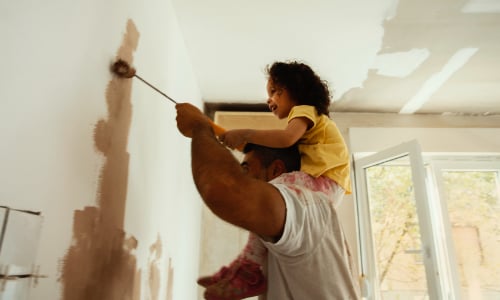How to Create a Budget for Your Future Home Project
Create a budget for your next home improvement project.

Making a Budget for a Home Renovation
It can be a fun adventure to start a new home project, but how do you pay for it if you don't already have the funds?
Perhaps you’re in the market for a new BBQ pit, or you’re planning a kitchen renovation. No matter what home improvement dream you have, in order to pursue it, it’s a good idea to establish a budget and stick to it. Check out these six ways to create a budget for the home renovation project of your dreams.
-
Calculate the Total Price Cost
Before undertaking any home improvement project, it is best to determine how much it will cost. Whether you plan to make this a DIY project or hire expert help, you should conduct some research to determine the best price. Look around and compare prices for the items you'll need to buy. Also, consider getting multiple estimates if you plan to hire an outside contractor or helper.
Keep in mind that the cheapest option might not always be the best, so think about your budget versus what you want in terms of quality. Don’t forget to account for contingency costs when determining your project budget. You may be surprised by emergency expenses, so it’s important to give yourself enough budget to handle them.
-
Consider the Return on Investment Value
When you have determined your project’s cost, figure out if the return on investment (ROI) value makes the effort and money worthwhile. Many projects are based on emotion, such as fulfilling a lifelong dream of having hardwood floors. In that case, the overall value outweighs the costs, especially if you plan to stay put for many years. However, if you intend to sell your house in the near future, it may be a problem.
If you buy a pool, for example, it might not be recouped when you're ready to sell your house. Real estate experts estimate an average 14x28 foot in-ground pool potentially increases home value five to eight percent. However, it usually costs around $50,000 to build a pool. That makes it likely that you may not recoup a portion of your initial investment.[1]
On the other hand, remodeling a bath or finishing a basement can increase your home’s value and expand its square footage, which can be used to increase its sale price. Be sure to think about your options, wants and needs, as well as any upcoming long-term or short-term events in your life.
-
Evaluate Your Current Finances
After you complete all of your evaluating and planning, you’ll need to review your budget and determine where your project could fit into it financially. One way to find out is to break down your incoming funds to your monthly expenses. Anything from monthly necessities to future events and vacations should be included. An easy way to accomplish this is through Money Manager in Online and Mobile Banking. See if there have been any consistent patterns with your expenses each month. You can then determine how much you have leftover each month, and where you could reduce spending and save money. Little savings can go a long way, like cutting a subscription service or eating out less.
-
Create a Savings Goal and a Timeline
Now you can create your savings goal, which should take care of most of the heavy lifting. If you want to reach your savings goal, you need to consider how long it will take. Some goals can be accomplished in a matter of months while others may require much more time. Thinking through all of your funding options is also a good idea at this time, and you should consider if you are eligible for home loan, home equity line of credit, or even a credit.
These can be a good option because saving for loan down payment would be easier and faster than paying for the entire project yourself. Also, each of these lending options will allow you to pay off your investment over a period of time.
-
Set a Place for the Savings
To keep track of your money, it may be a good idea to set up a dedicated place for your savings. You may wish to consider opening a savings account if you wish to save for the project yourself. You can easily add to the balance over time through auto-contributions or manually as you wish. Also, consider opening a new checking account or setting up a recurring spending category within an existing checking account to pay for your investment when the time comes.
The process of opening a new savings or checking account is usually simple enough that you can complete it online. No matter how and where your project funds are stored, make sure that you can track deposits and withdrawals easily. It is easier to manage your project finances if they are organized. You will also avoid going over budget.
-
Track and Adjust if Necessary
As soon as your budget is completed and you start saving for your goal, you can put your mind at ease. The best thing you can do is track your progress periodically. It may turn out you are saving more than you had expected and can complete your project earlier, which is great! Perhaps you have noticed the opposite and have decided it is time to adjust either your budget and savings goal, how much you are saving, or even the total cost of the project. Keep in mind that budgeting and saving do not happen overnight. Give yourself some time to reach your goal and make any adjustments you need down the road.
Source:
[1] Does a pool add value to a home?, HGTV
